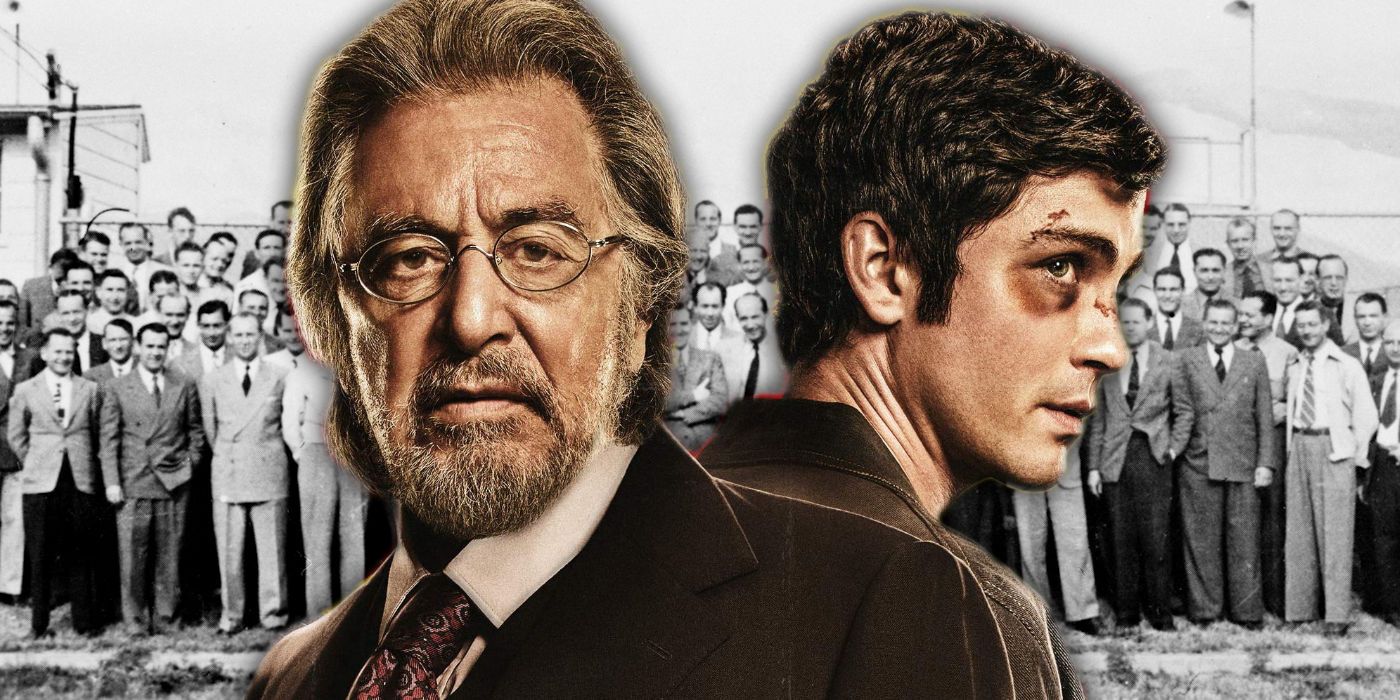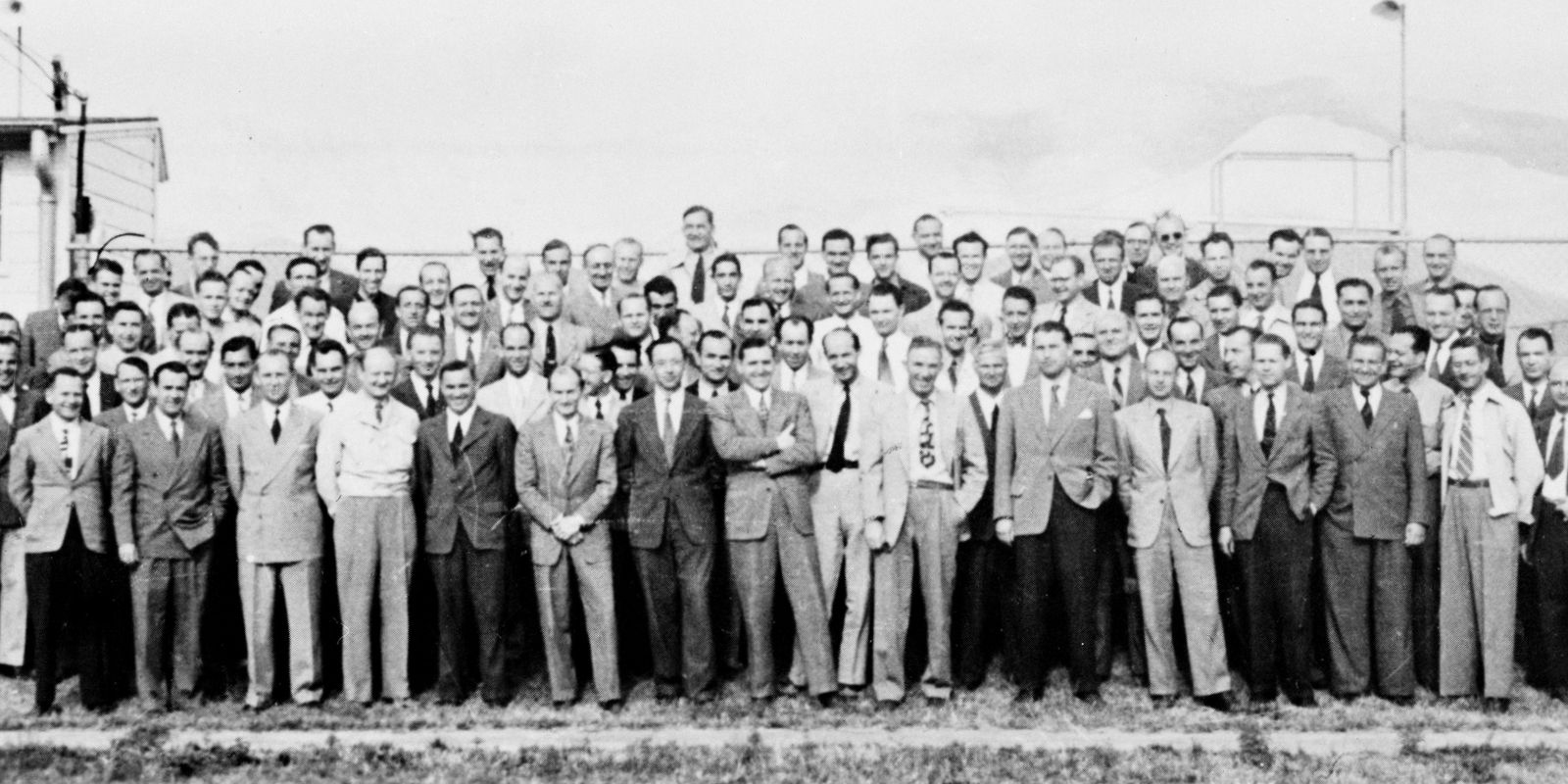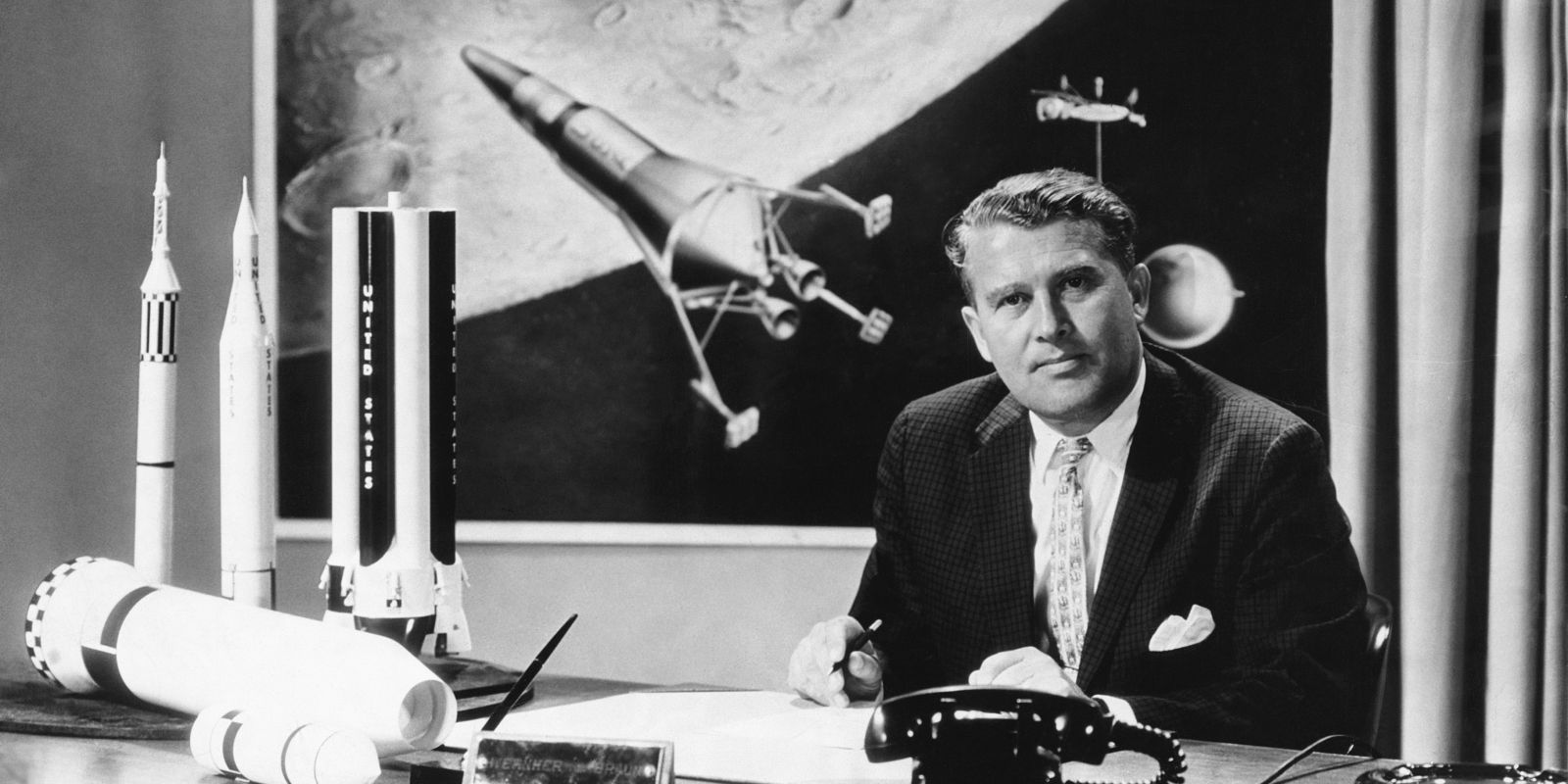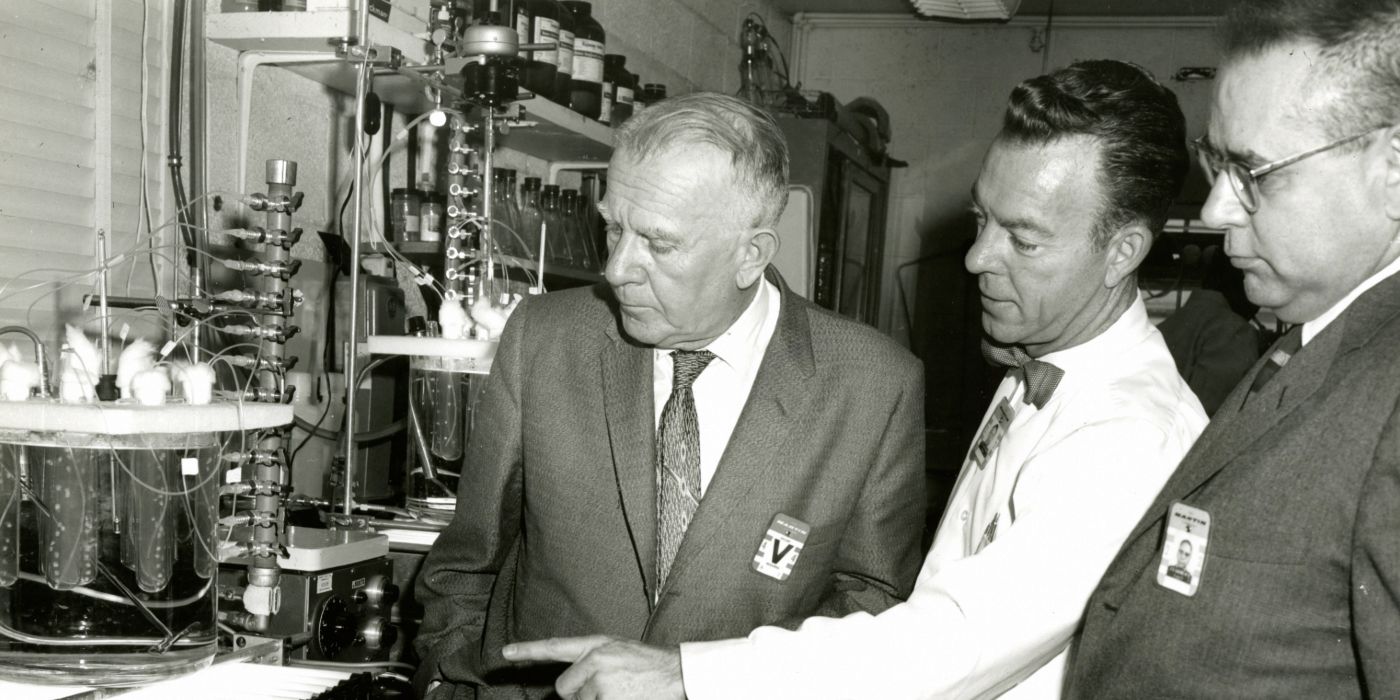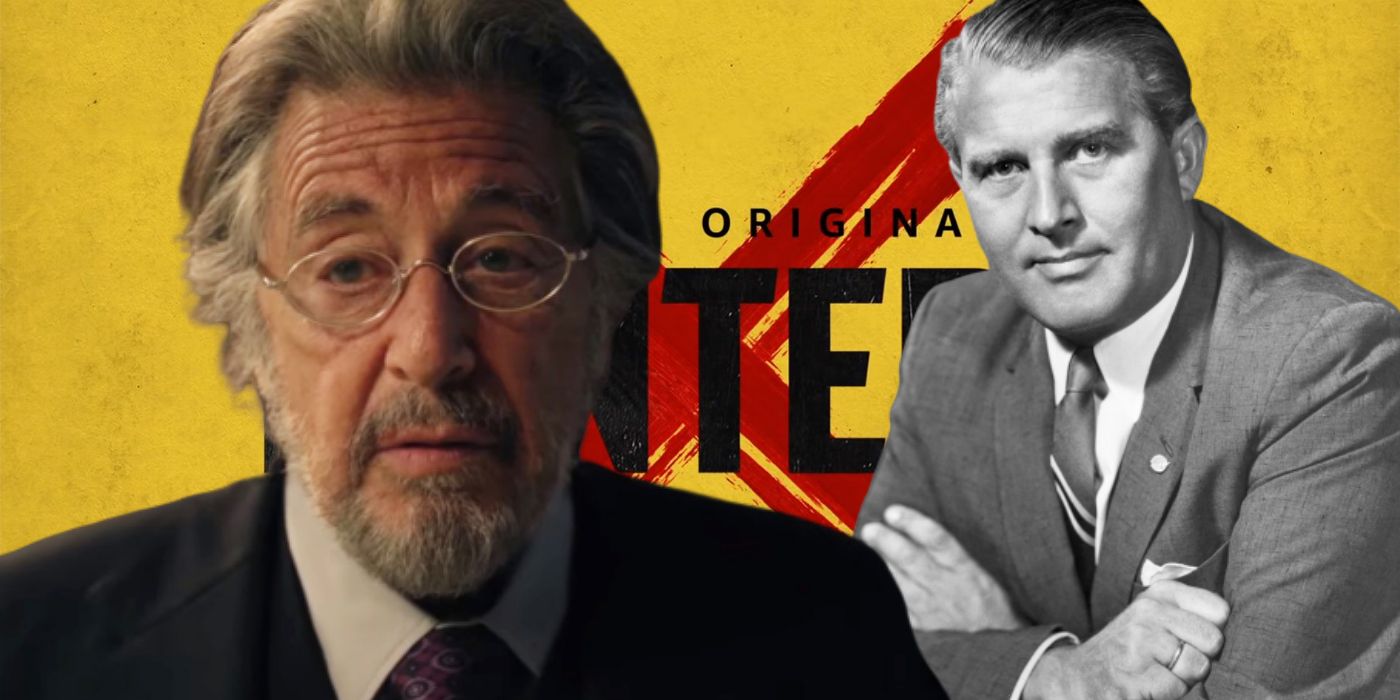WARNING: Minor spoilers for Hunters season 1.
Here's the true story behind Operation Paperclip, the secret program carried out by the United States which took in a large number of Nazis for government employment following World War II. The controversial operation inspired the creation of Amazon's latest drama series, Hunters. Series creator David Weil blended a mix of fact and fiction to follow what happened when German nationals, many of which were Nazis, emigrated to the U.S. under this program.
Hunters is set in 1977 and follows a Holocaust survivor named Meyer Offerman (Al Pacino) who leads an eccentric group of vigilantes known as "The Hunters." The group tracks and eliminates Nazis that have resided in the U.S. under new identities following the war. Among the group is young Jonah Heidelbaum (Logan Lerman) and more seasoned vets such as Murray and Mindy Markowitz (Saul Rubinek and Carol Kane), Lonny Flash (Josh Radnor), Sister Harriet (Kate Mulvany), Roxy Jones (Tiffany Boone), and Joe Torrance (Louis Ozawa Changchien).
Although Hunters is derived from Operation Paperclip, the story establishes an alternate timeline approach in which the Nazis try to regroup in the U.S. with the focus on another genocide. The series is loosely based on true events and heavily dramatized. There are some historical figures features in season 1, but the majority are fictional. The real details centered on the German scientists who made their way to the U.S. that Hunters briefly touches on still deserves to be told.
Operation Paperclip Explained
Following the victory by the Allies in WWII, Nazi Germany surrendered in 1945 and the U.S. obtained partial control over the nation. Despite the win, the world was far from peace and the Cold War was on the horizon. The Soviets occupied some of what remained of Nazi Germany, which worried the U.S. and other countries. Upon seizing Germany, the U.S. took many German scientists into custody. These scientists were knowledgeable when it came to biological warfare and rocketry. In order to bolster their own arsenal when it came to rockets and chemical weapons, President Truman authorized "Operation Overcast," a covert affair that brought 1,600 German scientists to the U.S. to work during the Cold War. The main problem was that many of the scientists were Nazis.
The 1946 secret program of the Joint Intelligence Objectives Agency (JIOA) was later renamed as "Operation Paperclip." The new title came from the fact that the scientists' files often came equipped with a paperclip to speed up the selection and immigration process. The Soviets already had an advantage in the U.S. when it came to rockets and weapons, so the scientists were brought in to not only assist in the country's efforts but to also keep key information and research out of the hands of enemies. Truman implemented rules that wouldn't allow the agency to recruit Nazis or scientists that supported Nazi. Officials, however, side-stepped the rules and brought in a large number of former Nazis before wiping their questionable history. For the next few decades, these scientists worked in the U.S. by developing missiles for the military and advancing the technology used by NASA during the Space Race.
Notable Nazis The U.S. Recruited
To get a leg up on the USSR during the Cold War, the U.S. turned a blind eye on the despicable pasts of their newly hired scientists. Many of the scientists weren't just Nazi sympathizers, a large portion were directly connected with war crimes, such as human experimentation, slave labor, and working in concentration camps. The agency responsible for enlisting help from many of the Nazis figured their skills outweighed their past. While most worked in aerospace and rocketry, others had prominent roles in architecture, radar, satellites, medicine, chemistry, and physics.
This was the case with arguably Operation Paperclip's most famous recruit, Wernher von Braun. The man was a rocket scientist who created the lethal V-2 rocket during the war but was recruited by the U.S. to work with the Army with rocket experimentation. Von Braun later worked at NASA and served as a key architect in the Apollo program even though he was eventually linked to war crimes. Rocket scientists Arthur Rudolph, Kurt Debus, and Eberhard Rees were three other Operation Paperclip recruits who worked at NASA and received the NASA Distinguished Service Medal alongside von Braun. The real-life scientist was the only Nazi from Operation Paperclip to appear in Hunters season 1 and was played by actor Victor Slezak.
Hubertus Strughold was another notable recruit as part of Operation Paperclip. Strughold was an aerospace engineer that specialized in medical research. He worked with NASA and the Air Force in space exploration and was credited for helping develop the spacesuit and space life support systems. The man became known as the “the father of space medicine" and a prestigious award was named after him until the truth about his past came out.
What Happened To The Nazis In America
When the U.S. brought in Nazis to assist in their Cold War efforts, the nation also welcomed the families of those scientists. In order to hide the dark pasts and identities as former Nazis, the JIOA and Office of Strategic Services (OSS) whitewashed the evidence linked to the recruits. In some cases, their files were completely scrubbed to cover up their wrongdoing. That didn't mean that all of the Operation Paperclip recruits who were clearly Nazis got away scot-free.
Some of the scientists were targeted by the U.S. government's Nazi-hunting efforts. This was the case with Arthur Rudolph, one of the NASA Distinguished Service Medal recipients. There was evidence that Rudolph participated in slave labor and worked in a factory near a concentration camp. In 1984, he gave up his U.S. citizenship and fled the country to avoid a trial.
Several other notable recruits left the U.S. after abhorrent evidence started to come out. The award named after Hubertus Strughold was retired in 2013 after much criticism. Wernher von Braun denied partaking in any crimes but still holds a complicated legacy. Only one scientist from the 1,600 who was brought to the country was actually tried for any crime, but he was never found guilty. The rest resided in the country while living seemingly normal American lives.
Hunters Gets The Basics Right About Operation Paperclip
It's very important to reiterate that Hunters was a work of historical fiction. The Nazis that made their way to the U.S. didn't have a secret mission to establish the Fourth Reich as suggested in the Amazon series. Hunters, however, does correctly showcase the basic goal of Operation Paperclip in that expert scientists were plucked from Germany for crucial roles within U.S. military and research efforts. Though a large number were Nazis, they were plugged into respectable positions as if they were American-born citizens.
Hunters amplifies the drama to portray an alternate reality in which the Nazis used a version of Operation Paperclip to cover up their real motives. Some high-ranking government officials might have been watching, but there wasn't a rag-tag team of vigilantes hellbent on killing Nazis who infiltrated the country post-WWII. That said, the true story doesn't take away from the fact that many of the scientists involved with Operation Paperclip deserved strict punishments for their actions during the war. It's no question why the secret program is still a topic of discussion decades later.

